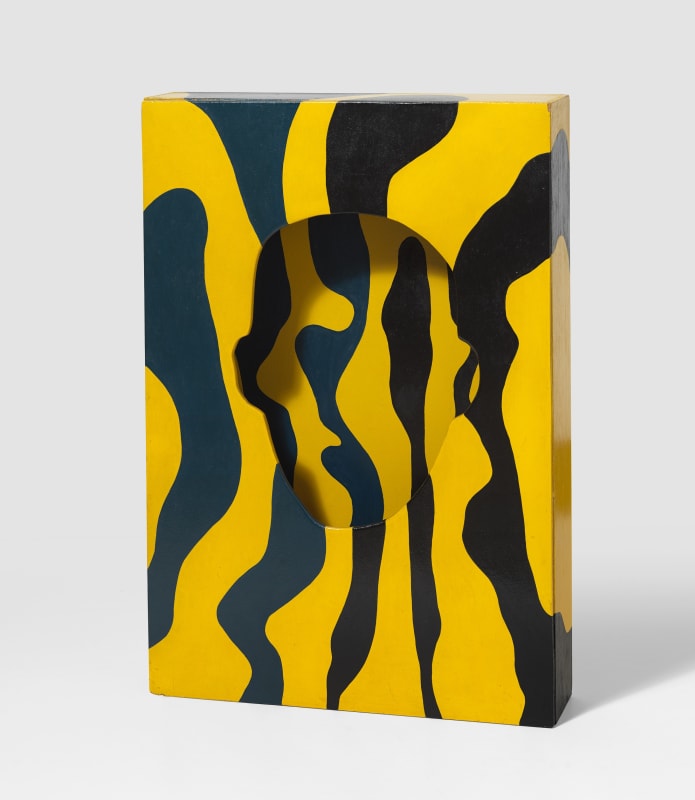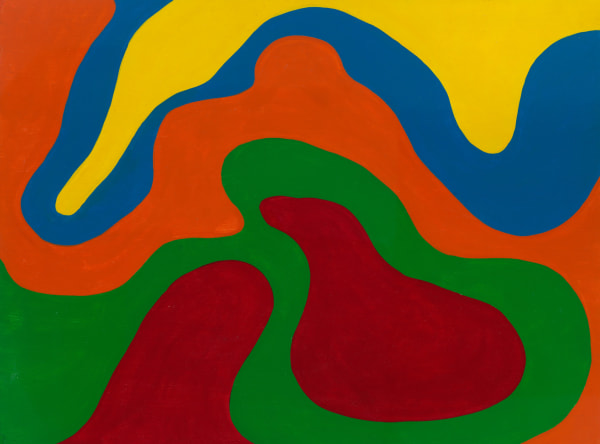Mari Chordà Amposta, b. 1942
Overview
"Much of today's feminism drinks from that other era: ideologies are not born like flowers in the spring, just like that. They are created little by little through changes over time."
- Mari Chordà
Painting is movement. It uses the mind as if it were technology and the eye like the dynamic interface which provides each image with rhythm, with dynamics. We should not therefore be surprised that an artist like Mari Chordà uses this medium to pursue gender issues in depth, the perception of certain organs, the sensorial universe which begins with understanding oneself, and which dives into the ocean of cultural interpretations, social determinations, the legal limits which define who we are, how we have to behave, our desire, our perpetuation as a species… Mari Chordà’s work explores the relations between shape and colour, the potential of simple elements to create powerful, erotic, even sexual images in the mind of the observer. At that time, painting is perceived like a woman herself. Seen from herself everything seems natural, simple. Outside, on the other hand, a battle is being fought. The main function of the patriarchy is to take possession of the other’s territory —whether land or a body—.
Works
Biography
Mari Chordà (Amposta, 1942) is a Catalan painter, poet and feminist activist born three years after the end of the Spanish Civil War. On the fringes of the patriarchal doctrines that still prevailed under the Franco dictatorship, Chordà decided to study at the Escola de Belles Arts de Barcelona, where she began to experiment with pictorial representations of the female body. In 1964 – a few years before the feminist art revolution that took place in the United States in the early 1970s with artists such as Judy Chicago and Miriam Shapiro – Chordà started her Vaginas series, focusing on the visual representation of femininity from a physiological perspective. Her pictorial style changed radically after she moved to Paris in 1965, becoming richer in colour – in dialogue with the trends of New Realism and Pop Art – and covering themes such as sexuality and maternity, as a result of her experience of pregnancy. In the mid-1960s, inspired by Niki de Saint Phalle’s Nanas, she created groundbreaking depictions of the female body in a “non-figurative” style, anticipating the feminist avant-garde of the following decade.
Chordà took an active part in feminist movements from the late 1960s onwards. In 1968 she founded the cultural centre “Lo Llar” in her native city. In 1977 she co-founded the legendary Bar-Biblioteca-Feminista “laSal” in Barcelona and the first feminist publishing house in Spain: “laSal Edicions de les Dones”.
Her work has been exhibited at the Tate Modern (London, 2015), Museo de Arte Contemporáneo de Castilla y León (León, 2006), Centre de Cultura Contemporània de Barcelona (Barcelona, 2019), Lo Pati (Amposta, 2017). It forms part of the permanent collection of the Museo Nacional Centro de Arte Reina Sofía (Madrid), Museu d’Art Contemporani de Barcelona and Museu Nacional d’Art de Catalunya (Barcelona). She has also published several books of poems and short stories, such as Quadern del cos i l’aigua (Notebook of the body and water) with illustrations by Montse Clavé (1978), Locomotora infidel pel passat (Locomotive unfaithful to the past) (1988) and Umbilicals (Umbilicals) (2000).
Exhibitions
-

Breaking the rules. Mari Chordà | Angela Garcia Codoñer | Isabel Oliver | Eulàlia Grau
PARIS 12 Jan - 18 Mar 2023ekekeRead more -

Mari Chordà. Feminist Landscapes
PARIS 5 Apr 2022 - 14 Jun 2023Following the first iteration in Barcelona, this exhibition pays tribute to the artistic career and work of Mari Chordà (b. Amposta, 1942) with a selection of 11 works created between...Read more -

Mari Chordà. A Pioneering Feminist Artist
BARCELONA 26 Nov 2021 - 21 Jan 2022Mayoral presents a monographic exhibition dedicated to the Catalan painter, poet and feminist activist Mari Chordà. This exhibition pays tribute to the artistic career and work of Mari Chordà (Amposta,...Read more
News
-

¡La revolución será feminista o no será! | Julie Crenn
Julie Crenn speaks about Mari Chordà, Angela Garcia Codoñer, Isabel Oliver and Eulàlia Grau on the occasion of the exhibition "Breaking the rules" at Galeria Mayoral, Paris January 5, 2023The exhibition requires us to place the works in context. We are in Spain, in the 1960s-1970s. Franco has been in power since 1936. He...Read more -

Mari Chordà and Assumpta Bassas in conversation at the MACBA (CATALAN)
Mari Chordà and Assumpta Bassas speak about the exhibition "Mari Chordà. A Pioneering Feminist" shown at Galeria Mayoral, Barcelona December 10, 2021Mari Chordà, Macba Barcelona, Galeria Mayoral, Feminista, Femenist ArtistRead more -

Chus Martínez on Mari Chordà
Chus Martínez talks about the exhibition "Mari Chordà. A Pioneering Feminist Artist" at Galeria Mayoral, Barcelona July 2, 2021Painting is movement. It uses the mind as if it were technology and the eye like the dynamic interface which provides each image with rhythm,...Read more










